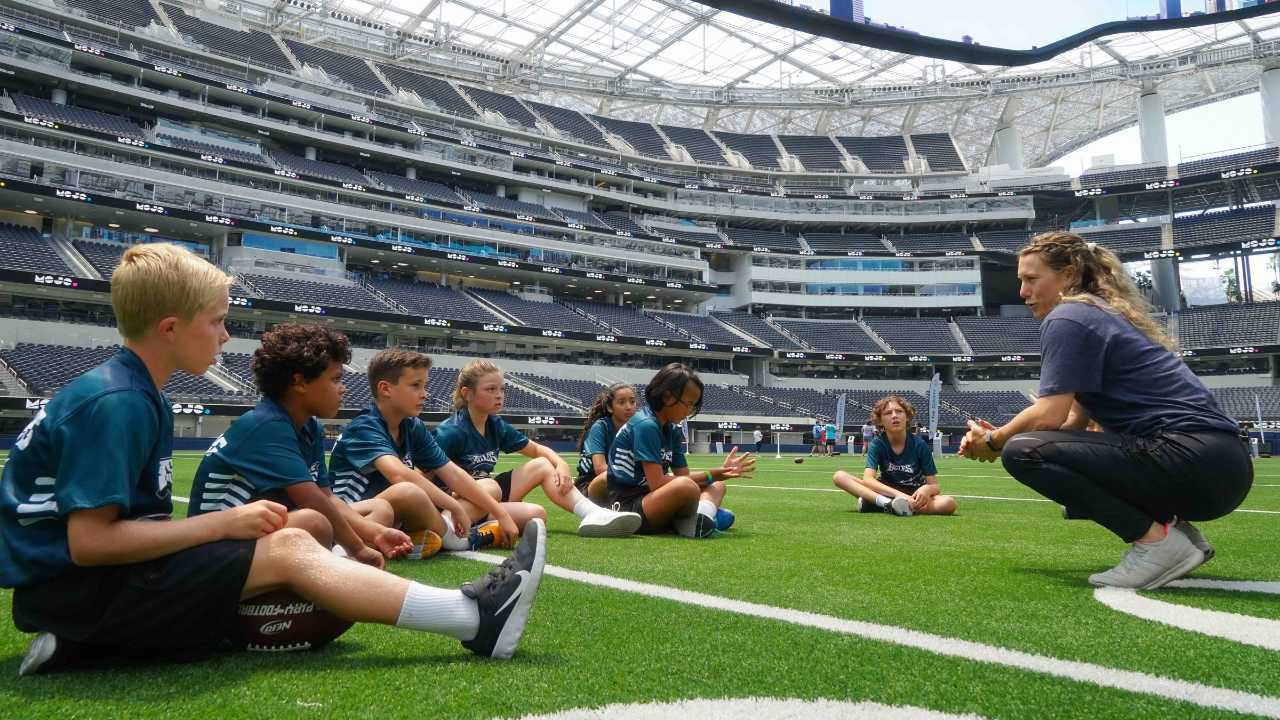What Is the Line of Scrimmage?
Invisible, yet mighty
Team MOJO
| 3 min read

How can something seem so straightforward, but be actually pretty confusing? Welcome to the line of scrimmage, or the LOS — as it’s known to its friends. The LOS is a hard worker on the flag football field, responsible for player positioning, rule enforcing and of course, marking the start of each play. Here’s the skinny on one of the most important lines of the game.
What it is
The line of scrimmage in flag football is an imaginary line that runs the width of the field and is parallel to the goal lines. The imaginary part is what makes it tricky for new players. Practicing on a field with yard markers helps make it more tangible.
Where it goes
After the first play of the game, the location of the line of scrimmage moves to where the ball is placed at the end of each play. If the offensive team gains yards during a play, the line moves closer to the endzone. But it can also move backwards if the defense pulls a flag behind the original line. Sometimes kids have trouble keeping track.
Why it’s important
The line of scrimmage is a key marker on a football field. This is where the quarterback gets to work. Handoffs need to happen behind the line of scrimmage, as well as all thrown passes. The qb can run behind the line of scrimmage, but not beyond it — not until after they get rid of the ball, that is.
The line of scrimmage separates the offense and defense before each play. If the defense is running man-to-man coverage, each player will match up with their offensive player on the line. For zone defense, coaches determine ahead of time which players are covering the line and which players are in zones closer to the endzone.
Certain positions anchor on or around the line of scrimmage. The center snaps the ball into play at the line. If a defensive player is positioned seven yards back from the line of scrimmage, they are allowed to rush the quarterback.
What to watch for
Offside. It’s a common penalty — and not just for new players. Offensive and defensive players can’t cross the line of scrimmage until the center has snapped the ball to start the next play. If they do cross the line, a penalty will most definitely be called. The center is the only player who can legally be in the neutral zone — the area between both teams, a ball-length-width apart from the line.




